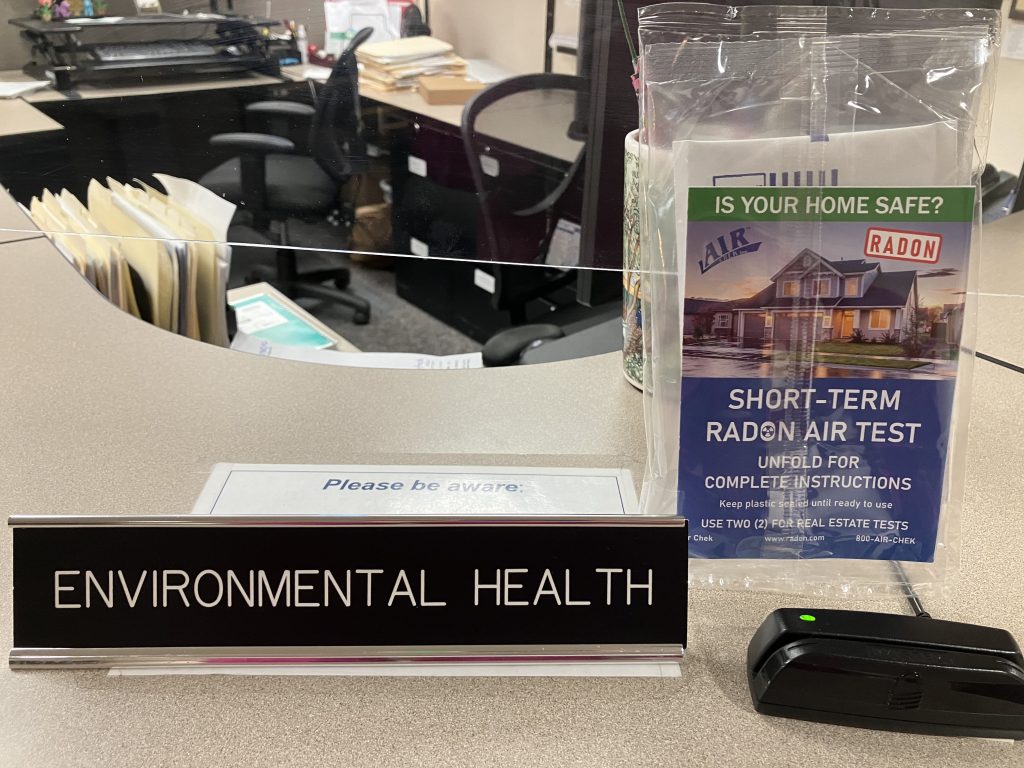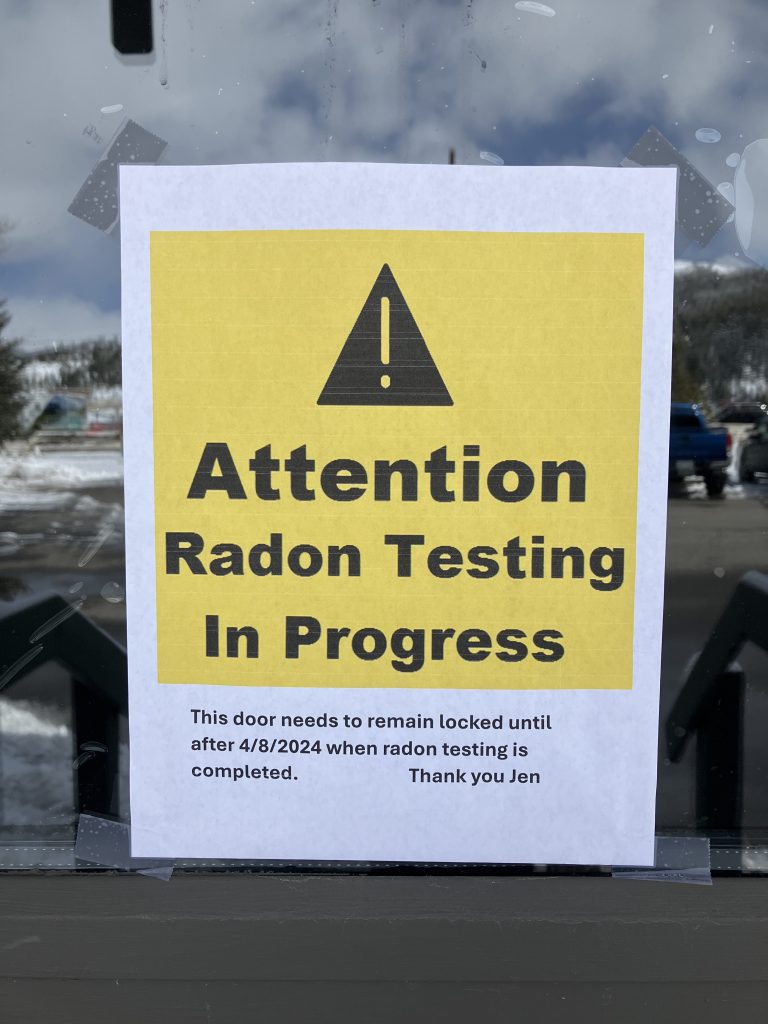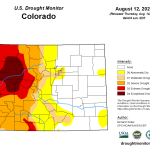This radioactive gas is found at higher levels in Summit County. Here’s how to stay safe.

Nicole Lantz/Summit Daily News
- Average: 8.7 pCi/L
- Range: Non-detectable*-53.7 pCi/L
- Average: 6.3 pCi/L
- Range: Non-detectable*-17.1 pCi/L
- Average: 4.1 pCi/L
- Range: Non-detectable*-34.7 pCi/L
- Average: 6.3 pCi/L
- Range: Non-detectable*-38.6 pCi/L
Summit County’s Public Health Department has been collecting radon test results from homeowners for 13 years and consistently sees alarming results. In 2023, roughly half of all homes tested had radon levels above the EPA’s recommended amount.
Radon is the second-leading cause of lung cancer after smoking, a fact adamantly affirmed by national health organizations like the American Lung Association and the United States Environmental Protection Agency.
Maya Kulick, Senior Environmental Health Specialist for Summit’s Public Health office, says the Environmental Protection Agency estimates that roughly 21,000 people die each year from radon-induced lung cancer. When applying that number to Summit County, Kulick says it would mean about two people in Summit County die each year from radon.
What is radon?
Radon is a radioactive gas — a natural product of decaying uranium, an element in the earth. It releases from the ground everywhere, making it hard to predict where higher levels will be found.
In 2023, the average test result was 6.4 pCi/L. 45% of results were above 4 pCi/L. 28% of test results were above 8 pCi/L. These results exclude follow-up tests for homes that had been tested and mitigated.
Buildings act like a vacuum and then trap the odorless gas, Kulick explains. People who inhale concentrated levels for extended periods of time can develop cancer as the radioactive particles attack lung cells.
Kulick uses this analogy for radon exposure: it’s like throwing darts at a dart board. Small levels of radon exposure in the home is similar to throwing one or two darts at the board every day. You’re bound to hit a bullseye eventually. Exposure to high levels of radon, she said, is like throwing 500 darts at the board at one time; the likelihood of hitting bullseye is far greater more quickly.
How to test for radon?
The only way to know if there are high levels of radon in a home, said Kulick, is to test the air.
Residents of Summit County can obtain free radon test kits, both short-term (3-7 days) and long-term (3-6 months) from the Public Health office located at 360 Peak One Drive, Suite 230, in Frisco and the South Branch Public Library.

Kulick’s video instructions for where to place the test kit and for how long are available at YouTube.com/watch?v=LJTZPAf9qbE.
What do radon levels mean?
The EPA writes that “there is no known ‘safe’ level of radon exposure,” on their website. They recommend reducing the amount in a home to as low as possible. They have, however, set a recommended limit: 4 picocuries per liter, or pCi/L.
Kulick says the EPA chose 4 pCi/L because it was an attainable goal. Any home can be mitigated to below 4 pCi/L. Summit’s Public Health says homes with levels between 4 and 8 pCi/L can be retested, but if the level is still above 4, mitigation is recommended. Homes with results above 8 pCi/L should be mitigated more quickly.
Ned Parker, a state-certified radon tester and mitigator in Summit County, encourages homeowners to reduce even small levels of radon. “It’s a carcinogen,” he said. “You don’t want any (in your home).”
Radon gas levels are unpredictable from home to home, according to both Parker, who tests and mitigates homes across the county, and Kulick, who has analyzed years of data. Residents can’t count on a neighbor’s results to be a true indicator of what their home’s levels are. “We see a house that’s high right next to a house that’s low,” said Kulick. What residents can count on, however, is that Summit County, and Colorado in general, have higher levels of radon compared to other parts of the U.S.
Kulick recalls how shocked other state officials at radon conferences are when they learn that the highest level her office has seen is 373 pCi/L. Parker says he’s seen even higher test results than that when testing homes this year.
Dezirae Weadick didn’t test her home in Summit Cove for radon until her family was selling their house in December 2023. The result was 9.1 pCi/L, and Weadick had to mitigate it as part of her contract to sell her home.
The initial test result didn’t surprise Weadick but, as a mother with young children, it raised her awareness about radon. “Going forward, I would always ask for radon testing,” she said.
Parker suggests retesting a home every year for radon since levels are so consistently high here in Summit County.

How can radon be mitigated?
What drives public health offices to raise the alarm about radon, said Kulick, is that it’s a preventable exposure. “Any home can be mitigated,” she said.
While tests are free, mitigation can have what Kulick calls a “sticker shock.” A simple pipe and fan system beneath a plastic barrier can suck the radioactive gas out from under the home and release it at the exterior roofline. The cost usually ranges between $1,000-$3,000 for parts and installation.
Kulick said there is some state financial assistance for homeowners who want to mitigate radon levels. Assistance depends on income and how many people live in the home. Information can be found at the state’s public health website: CDPHE.Colorado.gov/hm/low-income-radon-mitigation-assistance.
How-to videos for those who want to install their own system are also available at the state’s public health website: CDPHE.Colorado.gov/hm/testing-your-home-radon.
Kulick encourages homeowners to use a state-certified mitigator when hiring someone to work on their home. Certified professionals, like Parker of Summit Remediation Solutions, can guarantee their mitigation system will lower levels to 4 pCi/L or below. They also install systems approved by the state. Before these certifications existed, said Kulick, mitigators were installing systems that released the radioactive gas at ground level, which meant residents were still exposed from improper installation.

Renters, Kulick added, can also test their homes for radon. A state law passed in August 2023 ensures that renters who find high levels of radon in their space can break their lease legally if the homeowner does not mitigate the levels within 18 months.
Radon tests are not a required part of home inspections during sales, said Kulick, though test results must be disclosed. Kulick encourages homeowners, however, that investing in mitigation systems, besides protecting the health of residents, will help with the sale of the house. It’s a worthwhile investment, she said.

Support Local Journalism

Support Local Journalism
As a Summit Daily News reader, you make our work possible.
Summit Daily is embarking on a multiyear project to digitize its archives going back to 1989 and make them available to the public in partnership with the Colorado Historic Newspapers Collection. The full project is expected to cost about $165,000. All donations made in 2023 will go directly toward this project.
Every contribution, no matter the size, will make a difference.










